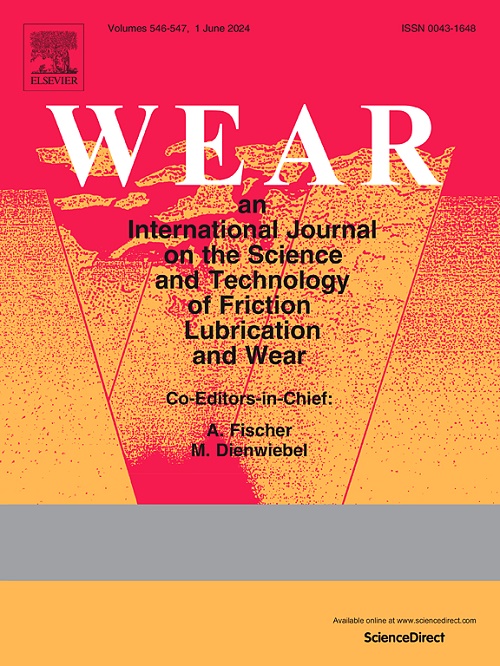碳纤维增强聚合物(CFRP)复合材料微孔加工中不同进给的刀具磨损建模
IF 5.3
1区 工程技术
Q1 ENGINEERING, MECHANICAL
引用次数: 0
摘要
碳纤维增强聚合物(CFRP)复合材料的微钻在航空航天等高端应用中越来越重要,以优化结构部件的气动性能。然而,CFRPs的微钻工艺仍然具有挑战性,特别是由于微钻的复杂和未充分探索的磨损机制。在微钻的情况下,尺寸效应起着显著的作用,犁耕优势相当大,并影响切屑形成机制和刀具加载条件,这与刀具磨损率并不严格成正比。因此,微钻在CFRPs中的磨损过程和建模不能直接从宏观尺度的经验中实现。本研究旨在建立工业用无涂层硬质合金微钻在碳纤维增强塑料加工过程中侧面磨损的预测模型。研究人员钻了数千个孔,建立了一个通用的侧翼磨损模型,随后通过涉及数百个孔的额外实验对模型进行了验证。通过数字显微镜和扫描电镜对刀具磨损进行了表征,并通过方差分析分析了进给量对刀具磨损的影响。建立了综合进给长度和切削长度的通用模型,可准确预测微钻的齿面磨损。该模型具有较高的精度(最大误差为主绝对百分比误差的13%)和鲁棒性,为工程师在复合微孔作业中加强工艺规划、保持加工质量、预测剩余刀具寿命和提高效率提供了有价值的工具。本文章由计算机程序翻译,如有差异,请以英文原文为准。
Modelling of tool wear incorporating various feeds in micro-drilling of carbon fibre-reinforced polymer (CFRP) composites
Micro-drilling of carbon fibre-reinforced polymer (CFRP) composites is gaining importance in high-end applications like aerospace to optimize the aerodynamic properties of structural components. However, the micro-drilling process in CFRPs remains challenging, particularly due to the complex and underexplored wear mechanisms of micro-drills. In the case of micro-drilling, the size effect plays a significant role, the ploughing dominancy is considerable and affects the chip formation mechanisms and the tool loading conditions, which are not strictly proportional to the rate of the tool wear. Consequently, the progression and modelling of wear of micro-drills in CFRPs cannot be directly implemented from macro-scale experiences. This study aims to develop a predictive model for flank wear of industrially used uncoated solid carbide micro-drills during CFRP machining. Thousands of holes were drilled to construct a general flank wear model, which was subsequently validated using additional experiments involving hundreds of holes. Tool wear was characterized through digital and scanning electron microscopy, while the influence of feed was analysed through analysis of variances (ANOVA). The developed general model incorporates feed and cutting length to predict micro-drills' flank wear accurately. The proposed model demonstrated high accuracy (maximum 13 % of main absolute percentage error) and robustness, offering a valuable tool for engineers to enhance process planning, maintain machining quality, predict remaining tool lifetime, and improve efficiency in composite micro-drilling operations.
求助全文
通过发布文献求助,成功后即可免费获取论文全文。
去求助
来源期刊

Wear
工程技术-材料科学:综合
CiteScore
8.80
自引率
8.00%
发文量
280
审稿时长
47 days
期刊介绍:
Wear journal is dedicated to the advancement of basic and applied knowledge concerning the nature of wear of materials. Broadly, topics of interest range from development of fundamental understanding of the mechanisms of wear to innovative solutions to practical engineering problems. Authors of experimental studies are expected to comment on the repeatability of the data, and whenever possible, conduct multiple measurements under similar testing conditions. Further, Wear embraces the highest standards of professional ethics, and the detection of matching content, either in written or graphical form, from other publications by the current authors or by others, may result in rejection.
 求助内容:
求助内容: 应助结果提醒方式:
应助结果提醒方式:


